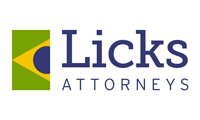Several patent offices around the world are facing backlog problems in light of the increasing number of patent applications filed. According to the Center for the Protection of Intellectual Property at George Mason University, countries like Brazil and Thailand are taking on average more than 10?years to issue a final decision in relation to a patent application.1
Pendency is an issue that is commonly considered to have greater negative effects in the high-tech industries, in view of the exponential obsolescence of technologies.2 However, the life sciences industry can also be affected by delays in patent examination.3
The backlog of the Brazilian Patent Office (INPI) is considered the worst in the world.4 Facing several infrastructural problems and a lack of patent examiners, the INPI can take up to 15?years to decide to grant or reject a patent application covering a pharmaceutical invention.
In this scenario, pharmaceutical firms are trying to work around the backlog to effectively enforce pending patent applications against generic companies. As discussed in this article, a Brazilian court has recently granted a preliminary injunction in favour of Allergan, based on patent applications that were pending before the INPI.
The Allergan case
In September 2016, Allergan Inc. and its Brazilian affiliate filed a lawsuit against the Brazilian generic laboratory Uniao Quimica Farmaceutica Nacional (UQ), based on an alleged act of unfair competition.
Allergan informed the court that UQ had obtained abbreviated marketing authorizations from the Brazilian Food and Drug Authority for an eye drop medicine identical to the drug Combigan, an ophthalmic solution containing a combination of brimonidine tartrate and timolol maleate, used for the treatment of open-angle glaucoma or ocular hypertension (high pressure inside the eye).
According to Allergan, Combigan is covered by pending parent patent application PI0302584-5 and divisional applications BR1220140116901-9 and BR122014-16915-9. Patent application PI0302584-5 was rejected by the Brazilian PTO in February 2016 for obviousness, but an administrative appeal filed by Allergan was pending before the Patent Appellate Board.
Allergan filed a lawsuit before the Second Civil Court of the São Paulo State Regional Courthouse of Pinheiros,5 seeking a preliminary injunction to enjoin UQ from exploring, manipulating, storing, producing, distributing, promoting or commercializing copies of Combigan, until a final decision by INPI on the three pending patent applications.
Preliminary injunctions for pending patent applications under the Brazilian Rules of Civil Procedure
The Rules of Civil Procedure (Statute #13,105/2015) establish in section 300 that a preliminary injunction shall be granted when there are elements that shows a ‘probability of the right’ and a ‘risk of damage’. Further, section 201, subsection I of the Patent Statute (Statute #9,279/1996), enables the granting of a preliminary injunction to prevent ‘irreparable damage’ or ‘damage that would be difficult to repair’ to intellectual property rights.
According to Allergan, the ‘risk of damage’ consisted in the loss of market exclusivity. According to the claimant, the granting of the marketing approval itself was sufficient evidence that UQ would launch its copies in the market (as admitted by the defendant in an answer to a cease-and-desist letter sent by Allergan).
UQ stated that it believed that Allergan’s patent applications did not comply with the patentability requirements and, consequently, the company was taking the necessary measures to launch its copies.
The ‘probability of success’ to obtain a preliminary injunction requires a higher standard of proof. Section 426 and 447 of the Patent Law do not deal with the infringement of a patent application, as they only discipline the payment of compensation for infringing conduct between the publication date and the subsequent granting of the patent.
Allergan provided four pillars to support its ‘probability of success’ argument.
First, on the probability that its Brazilian applications would be granted, it noted that similar claims had already been granted in 28 countries, such as Australia, Canada, China, Korea, the United States and several others in the European Union. Therefore, Allergan was expecting the granting of those patent applications in Brazil.8
Second, to show the likelihood of infringement, Allergan filed affidavits from Brazilian scientific experts. In their opinions, the experts concluded that the patent applications would cover an ophthalmic solution of brimonidine tartrate and timolol maleate. Allergan relied on these opinions to argue that, as the Abbreviated New Drug Application before the Brazilian FDA claimed Combigan as a reference drug, UQ’s drug would effectively compete in the same pharmaceutical market as Combigan, since Brazilian food and drug law demands interchangeability between the reference drug and its copies.9
Allergan’s third argument was focused on the backlog of the Brazilian PTO. The pharmaceutical company alleged that the original, parent patent applications had been filed in 2004 and that the 12-year pendency of the application violated sections 42.2 and 62.2 of the TRIPs Agreement—enacted in Brazil by Decree #1,355/94—which barred unreasonable and unduly deadlines and delays.
The inefficiency of the Brazilian PTO, with more than 180,000 pending applications and more than 10?years, on average, to examine a patent application, put Allergan in a situation of legal uncertainty. Had the applications been prosecuted in a reasonable time, they would have already been granted and Allergan could have enforced them based on the Patent Statute.
According to Allergan, if the courts were to fail to enforce its IP rights because the patent was still pending, the State’s inefficiency would damage the company, which would have to tolerate competition from third parties copying its invention without authorization. In addition, the patentee would be absolutely deprived of effective means to protect its invention during the patent examination, an administrative proceeding whose duration is independent from the patentee’s will.
Last, Allergan added unfair competition arguments to support its request for a preliminary injunction. Section three of the Patent Law states that its provisions apply—when applicable—to patent applications,10 specifically section 195, regarding acts of unfair competition, and section 209 and its subsection I, which grants the owner of intellectual property rights the right to seek damages and/or an injunction.
According to Allergan, UQ had acted in bad faith, as the generic company should have been aware of the pending applications for Combigan and had thus chosen to violate Allergan’s IP rights, taking advantage of the backlog of the Brazilian PTO. By launching its copies into the market before a patent was granted, UQ was free-riding the investment made by Allergan in the development of Combigan, taking market share and unlawfully profiting from somebody else’s invention; a ‘parasitic’ behaviour.
The decision of the court: a preliminary injunction for a pending patent application
On 28 September 2016, the Trial Court granted Allergan’s request for an ex-parte preliminary injunction, barring UQ from exploring, manipulating, storing, producing, distributing, promoting or commercializing copies of Combigan until a final decision from INPI on the pending applications.
The decision stated that INPI takes too long to examine applications and such delay causes problems that result in judicial litigation. According to the court, had INPI examined the patent applications in due time, Allergan’s lawsuit would have been unnecessary.
The decision concluded that pharmaceutical companies spend significant amounts of money in research and development of new drugs, and the benefit of such research is clear, as the patent system reward the investment to allow improvements in pharmaceutical research.
The decision recognized that similar patents had been granted worldwide and stated that INPI’s delay in examining the applications cannot weaken the patentee’s rights.
UQ filed an interlocutory appeal in October 2016. The Trial Court injunction was stayed by the reporting Appellate Judge of the interlocutory appeal, Hon. Francisco Loureiro. According to Hon. Loureiro, the patentee can enforce its rights to exclude others only after a patent has been granted.
However, on 15 March 2017, the panel, in a majority vote, decided to uphold the Trial Court decision. Hon. Cesar Ciampolini, who rendered the judgment of the majority, stated that UQ’s behaviour was an act of unfair competition that needed judicial redress. The conclusion took into account (i) INPI’s inadmissible delay in prosecuting the application, (ii) the potential obsolescence of the product and (iii) the granting of corresponding patents abroad and the fact that UQ had not denied that its products were copies of Combigan.
A few weeks after the decision, the Brazilian PTO rejected Allergan’s administrative appeal against the denial of the parent application. As soon as the Brazilian PTO made its decision available, UQ filed a brief before the Trial Court informing that such decision by the PTO was final and not subject to another administrative appeal.
According to UQ, there was no longer a relevant pending patent application, as the only application pending for a long time—12?years—before the PTO was the parent application (the divisional applications had been filed in 2014), and Allergan’s arguments in light of the foreign corresponding patents were no longer valid.
Thus, UQ requested not only the revocation of the injunction, but also the dismissal of the lawsuit, due to a lack of standing to sue, as a patentee is not allowed to file a lawsuit based on the enforcement of a patent application that has been rejected by INPI. In its request, UQ raised antitrust arguments based on section 35, subsections I, IV and paragraph 3, subsections III, IV and XIX of Law #12,529/2011.11
On 10 July 2017, the State Court of São Paulo issued a decision dismissing the case, since INPI had rejected the patent applications. According to the court, following the final decision by the Brazilian Patent Office, there was no patent to be enforced against the generic companies.
Conclusion
The Allergan case represents an interesting change in the paradigm of enforcement of patent rights. While pending patent applications should not be considered for infringement purposes, the fact that a patent office is taking too long to examine a case should be of concern to adjudicators.
In addition to seeking damages during the period when the patent was being infringed, the possibility of obtaining preliminary injunctions has the potential to change patent litigation strategy in Brazil.
______________
1 M. Schultz and K. Madigan, ‘The long wait for innovation: the global patent pendency problem’ (2016), Center for the Protection of Intellectual Property (George Mason University), available here. (last accessed 4 August 2017).
2 J. Gans, D. Hsu and S. Stern, ‘The impact of uncertain intellectual property rights on the market for ideas: Evidence from patent grant delays’, Management Science (2008) 54(5), 982.
3 B. Roin and H. Williams ‘Do firms underinvest in long-term research? Evidence from cancer clinical trials’, American Economic Review (2013) 105(7), 2044.
4 O. Licks, ‘Brazil: analysing the INPI backlog’, World IP Review (18 December 2015).
5 Allergan v Uniao Quimica, Second Civil Court of the São Paulo State Regional Courthouse of Pinheiros, Dokket No. 1010743-63.2016.8.26.0011.
6 Section 42 of the Brazilian Patent Statute: ‘A patent confers on its proprietor the right to prevent third parties from manufacturing, using, offering for sale, selling or importing for such purposes without his consent: I. a product that is the subject of a patent; II. a process, or product directly obtained by a patented process.’
7 Section 44 of the Brazilian Patent Statute: ‘A patentee is guaranteed the right to obtain compensation for the unauthorized exploitation of the subject matter of the patent, including exploitation that occurred between the date of publication of the application and that of grant of the patent.’
8 Also, no marketing approval for a copy had been granted in any of these countries, where the patents were still in force.
9 Statute #6,360/76, Section 3, subsection XX: ‘Similar drug—one that contains the same active ingredients(s) has the same concentration, pharmaceutical form, route of administration, dosage and therapeutic indication, which is equivalent to the reference drug registered with the federal agency responsible for health surveillance, and may differ only in characteristics related to the size and shape of the product, shelf life, packaging, labeling, excipients, carriers, its effectiveness, safety and quality being proved and always being identified by its trade name or trademark; (Wording given by Act #13,235/2015).’
Section 3, subsection XXI: ‘Generic drug—drug similar to a reference or innovative product, which is intended to be interchangeable with it, usually produced after the expiration or waiver of patent protection or other exclusivity rights, proven its effectiveness, safety and quality, and designated by the Brazilian Common Denomination (DCB) or, in his absence, by the INN.
Section 3, subsection XXII: ‘Reference drug—innovative product registered at the federal agency responsible for sanitary surveillance and marketed in the country, whose efficacy, safety and quality have been scientifically proven by the competent federal agency upon registration.’
10 ‘The provisions of this statute also apply: I. to an application for a patent or registration originating from abroad and filed in this country by a person having protection guaranteed by a treaty or convention in force in Brazil; and II. to nationals or persons domiciled in a country that guarantees reciprocity of identical or equivalent rights to Brazilians or persons domiciled in Brazil.’
11 Article 36: ‘The deeds which, by any means expressed, have it as their object or are able to produce the following effects, even if these are not achieved, shall entail a violation of the Economic Order: I—To limit, to fraud or to by any means cause harm to the free competition or the freedom of initiative; IV—To abusively make use of the dominant position [in the market].
Paragraph 3. The following conducts, amongst others, as far as they configure the hypothesis set forth in this article’s caput and its items, characterize a violation of the economic order: III—to limit or to prevent the access to the market by new companies; IV—to hinder the constitution, the operation, or the development of a rival company or of a supplier, an acquirer, or sponsor of goods and services; XIX—to abusively enact or explore industrial, intellectual, technological, or trademark property rights.’
____________
 *Felipe Mesquita is a partner at Licks Advogados.
*Felipe Mesquita is a partner at Licks Advogados.
 *Roberto Rodrigues Pinho is an attorney at Licks Advogados.
*Roberto Rodrigues Pinho is an attorney at Licks Advogados.
